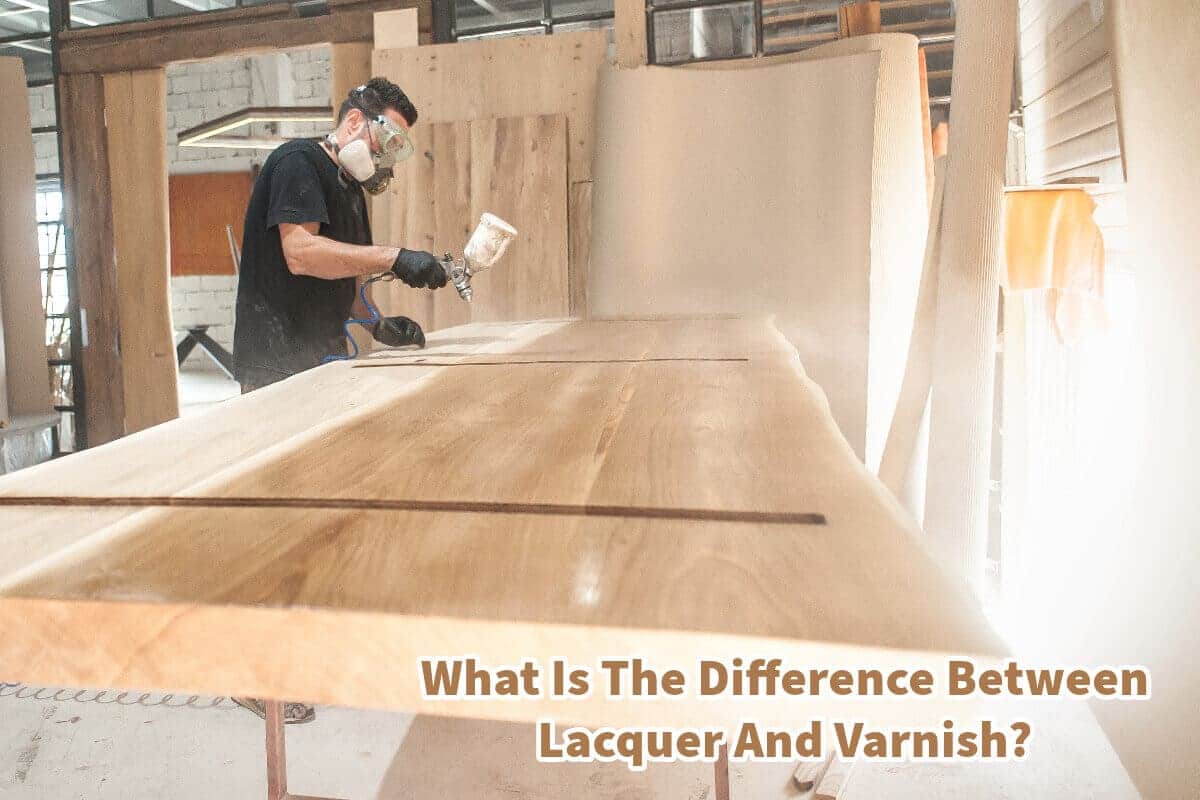Occasionally, there is ambiguity surrounding the terms varnish and lacquer, as they both signify different things and bear importance in their own right.
The distinction between lacquer and varnish in home furnishing and decor is significant, as each offers unique surface protective qualities. Grasping these distinctions is vital for creating and finishing home products.
Table of Contents
- The Distinction Between Lacquer And Varnish: Understanding Their Differences And The Art Of Vietnamese Lacquer
- 10 Key Differences Between Lacquer And Varnish
- The Allure Of Vietnamese Lacquer
- Related Content
The Distinction Between Lacquer And Varnish: Understanding Their Differences And The Art Of Vietnamese Lacquer
Regarding finishing wood, two terms often arise that can confuse: lacquer and varnish. Both are used to protect home decor and home furniture surfaces, but they have distinct characteristics that set them apart. Understanding these differences is crucial for anyone involved in product design or home decor.
Read on as we delve into what lacquer and varnish are, explore ten critical differences between them, and conclude with insights into Vietnamese lacquer and how Mondoro capitalizes on this artisanal craft to create, develop, and manufacture exquisite home decor and furniture products.
What Is Lacquer?
Lacquer is a finish usually made from a combination of shellac dissolved in alcohol or a synthetic substance such as nitrocellulose, which is dissolved in a solvent. It’s known for creating a hard, durable, glossy, or matte finish.
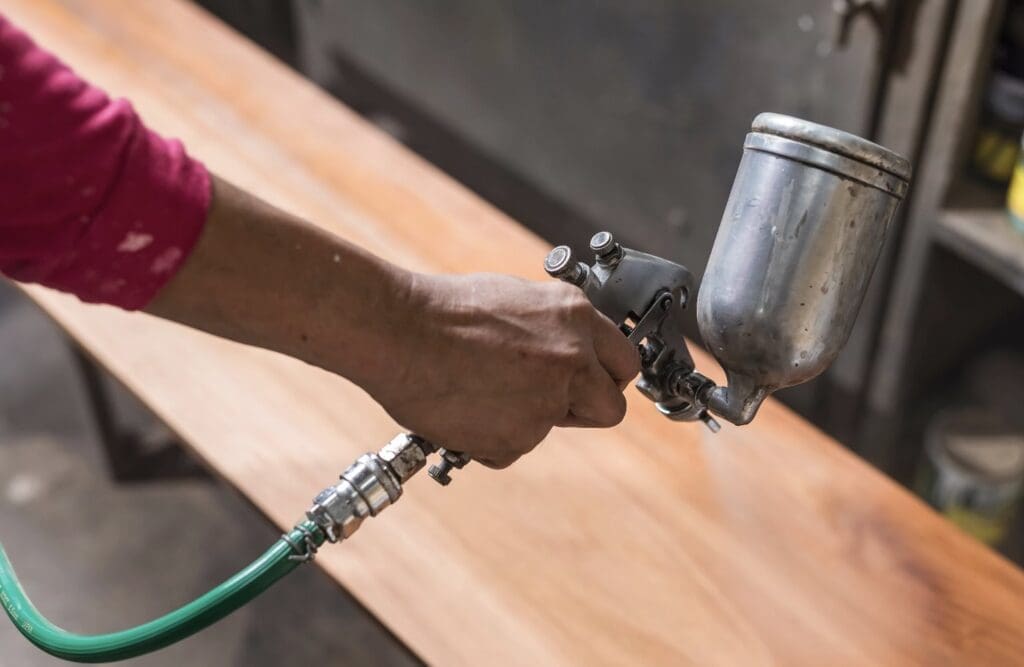
Lacquer is typically applied using a sprayer, which is why it’s a favorite in professional shops; it dries quickly through solvent evaporation and produces a clear or colored coat that can be polished to a high shine.
What Is Varnish?
Conversely, varnish is traditionally composed of oil, resin, and a solvent or thinner. It’s known for its protective qualities, especially against moisture. Varnish often takes longer to dry than lacquer and usually dries by chemical reaction once exposed to air.
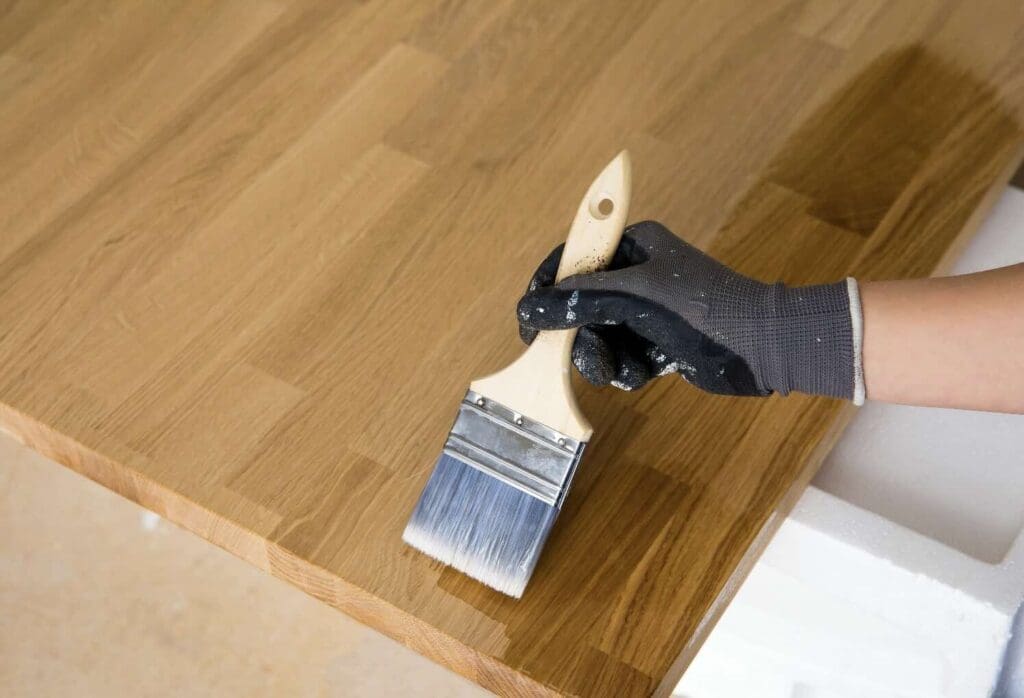
It can be applied with a brush and tends to leave a transparent or tinted finish with a gloss, satin, or flat sheen. Varnish is preferred for outdoor projects or surfaces exposed to the elements due to its UV resistance and durability.
10 Key Differences Between Lacquer And Varnish
Even though lacquer and varnish may seem similar, they have some distinct differences that make them both unique. Read on as we outline 10 key differences.
Composition:
Lacquer is made of shellac or synthetic substances like nitrocellulose with solvents, while varnish is an oil-based product mixed with resins and solvents.
Application:
Lacquer is typically sprayed on, which requires a well-ventilated space and protective gear. Varnish is usually brushed on, making it more suitable for DIY enthusiasts.
Drying Time:
Lacquer dries quickly as the solvents evaporate, whereas varnish dries slowly through an oxidative process.
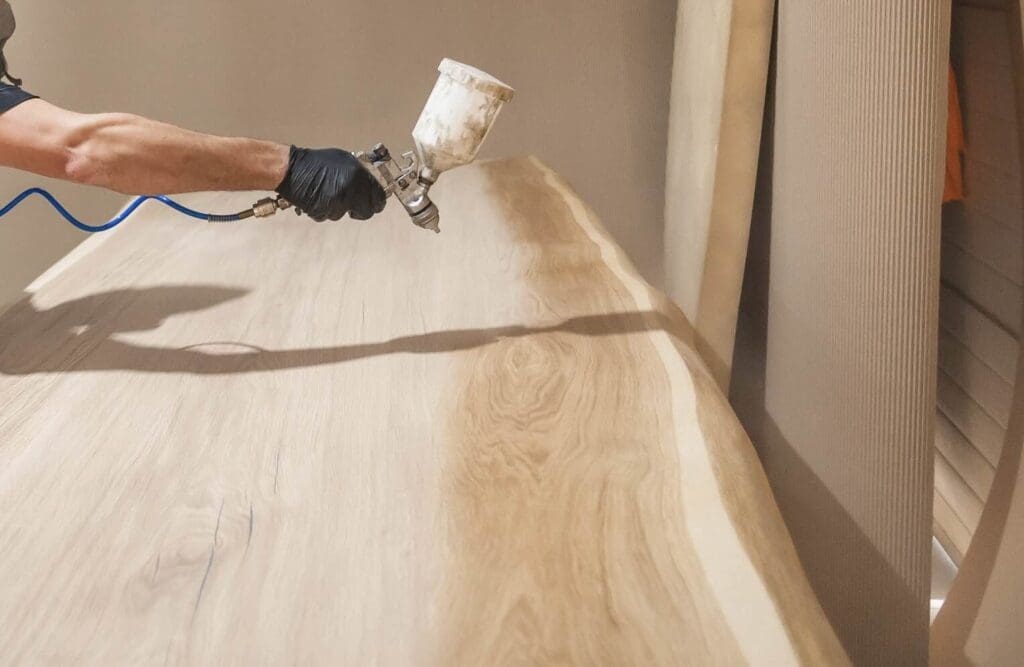
Durability:
While both finishes are durable, lacquer is more prone to scratching and is less UV-resistant than varnish. Varnish, being oil-based, is more flexible and thus better suited to withstand heat and other environmental factors.
Maintenance:
Lacquer can be more difficult to repair due to its tendency to chip, but it’s easier to reapply because new layers dissolve into and bond with the old ones. Varnish, however, is more resistant to damage but can be harder to touch up, often requiring sanding and reapplication of a new layer.
Appearance:
Lacquer generally provides a thicker, glossier finish that is smoother. Varnish can offer a range of sheens, but the finish is often softer and may yellow over time.
Protection:
Varnish has superior water resistance and is better suited for outdoor furniture or boats. Lacquer, although water-resistant, doesn’t fare as well with prolonged moisture exposure.
Color:
Lacquer can be found in various colors, providing a vibrant finish without hiding the grain of the wood. Varnish is transparent and may have a slight amber or golden tint, enhancing the natural color of the wood.
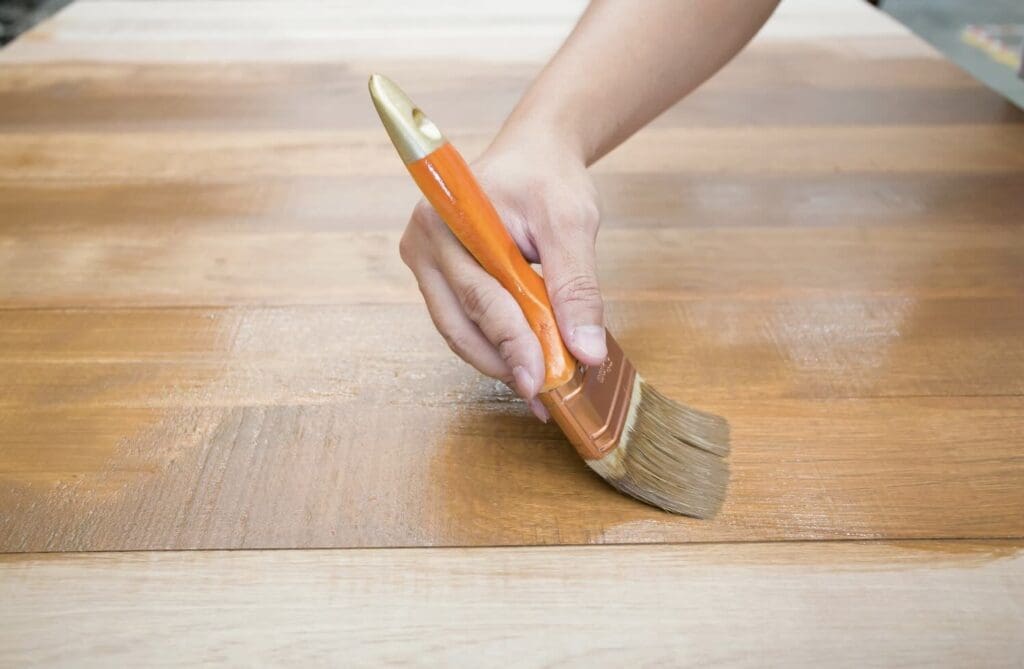
Toxicity:
The solvents in lacquer are often more toxic and flammable than the oils and resins in varnish, requiring careful handling and disposal.
Usage:
Lacquer is often used on cabinetry, musical instruments, and other indoor furniture because of its fine finish and fast drying time. We use it a lot at Mondoro to produce home decor accessories and items.
Varnish is chosen for outdoor applications and surfaces that experience a lot of wear, like floors and decks.
The Allure Of Vietnamese Lacquer
Vietnamese lacquer, known as ‘sơn mài,’ is a traditional craft that involves a meticulous and time-consuming process. This art form is highly regarded and has been practiced in Vietnam for centuries.
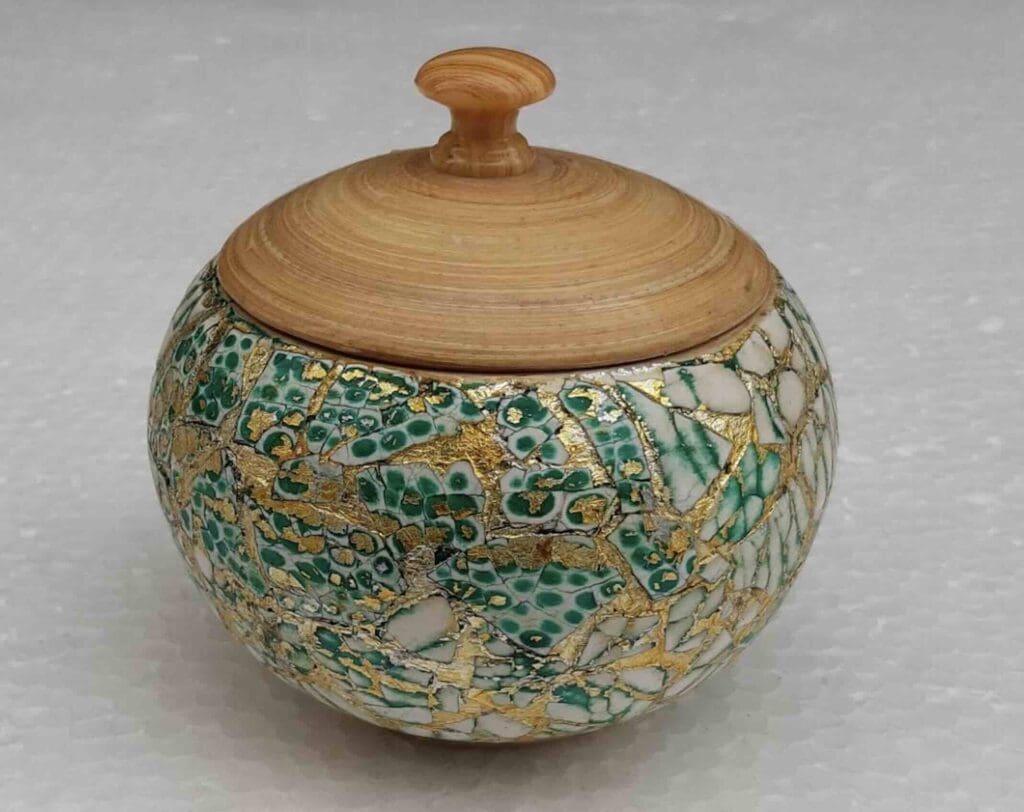
Creating a Vietnamese lacquer item includes several stages: applying several layers of lacquer, sanding down, and then polishing to reveal a deep, lustrous finish. The beauty of Vietnamese lacquer lies in its depth, quality, and skillful incorporation of inlaid eggshell, mother-of-pearl, or gold leaf.
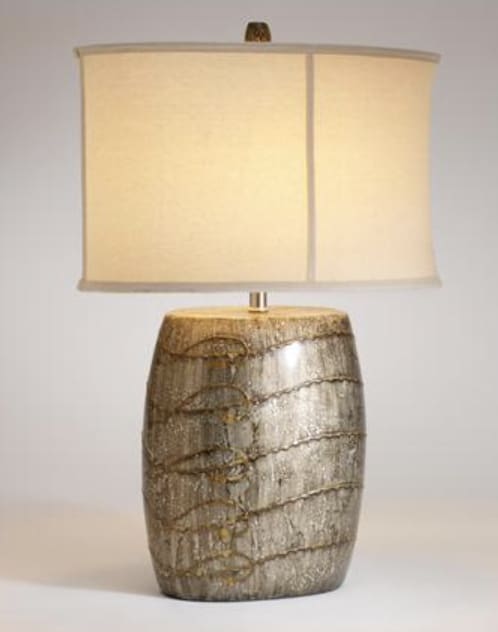
How Mondoro Brings Vietnamese Lacquer To Global Homes And Spaces
Mondoro Company Limited stands at the intersection of traditional artisanship and contemporary design. They are dedicated to crafting home decor and furniture that harness the exquisite qualities of Vietnamese lacquer. With an emphasis on sustainability and ethical practices.
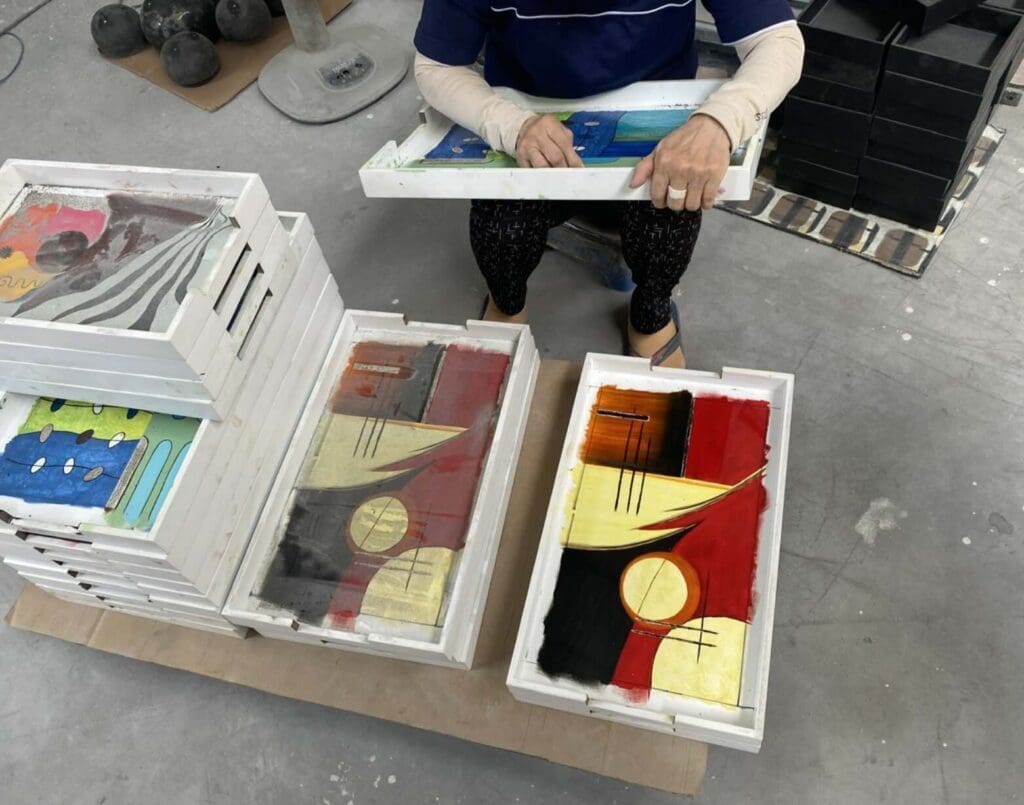
Their expertise lies in developing products that reflect the rich heritage of Vietnamese lacquerware and cater to modern interior aesthetics.
Whether it’s sleek tables, ornate decorative pieces, or functional artworks, Mondoro ensures each piece resonates with quality and history.
While lacquer and varnish are protective finishes for home decor and furniture, their differences lie in composition, application, durability, and aesthetics.
As we embrace the beauty of finishes, Vietnamese lacquer stands out as a testament to human craftsmanship, something Mondoro masterfully brings to life through its products.
By choosing Mondoro, one doesn’t just acquire a piece of furniture or decor; they become part of a story that dates back generations, continuing the legacy of Vietnamese lacquer into homes and spaces worldwide.
At Mondoro, we would love to help you decide which material would be best for manufacturing your home decor and furniture product.
Find out more about how Mondoro can help you create, develop, and manufacture excellent home decor and home furniture products – including lacquer furniture. Don’t hesitate to contact me, Anita. Check out my email by clicking here or become a part of our community and join our newsletter by clicking here.
Mondoro gives out a FREE Lookbook to anyone interested. You can receive a copy of our latest Lookbook by clicking here.
Listen to our Podcast called Global Trade Gal. You can find it on all major podcast platforms. Try out listening to one of our podcasts by clicking here.
Subscribe to our Mondoro Company Limited YouTube Channel filled with great videos and information by clicking here.
Related Content
10 Types of Grain Patterns of Solid Wood Furniture Explored
We will explore ten different types of grain patterns found in solid wood furniture, including Maple, Beech, Hickory, Oak, Teak, Pine, Rubberwood, Walnut, Douglas Fir, and Spruce. We will delve into the characteristics of each wood type and examine how their distinct grain patterns contribute to their suitability for furniture production.
You can discover more by reading 10 Types of Grain Patterns of Solid Wood Furniture Explored by clicking here.
Is Solid Wood Furniture Expensive? 3 Factors To Consider
Three main factors can significantly influence the furniture price if you choose solid wood. These factors include the type of wood used, the size of the furniture piece, and the construction techniques employed, all of which play a crucial role in determining the final cost. Read on as we explore each of these.
You can learn more by reading Is Solid Wood Furniture Expensive? 3 Factors To Consider by clicking here.
Why Is It So Hard To Find Solid Wood Furniture Manufacturers?
Locating trustworthy solid wood furniture manufacturers can be an intricate endeavor for retailers and wholesalers. The task’s complexity is rooted in many factors related to solid wood furniture’s production and manufacturing procedures. Read on as we explore the complex task of the search for solid wood furniture manufacturers and how Mondoro can help you.
You can learn more by reading our blog Why Is It So Hard To Find Solid Wood Furniture Manufacturers? by clicking here.

